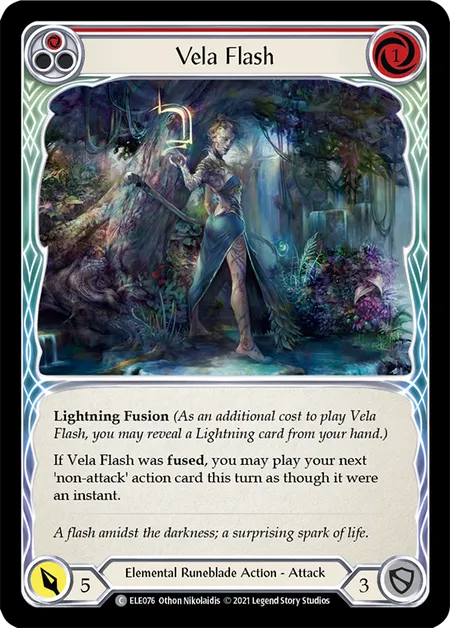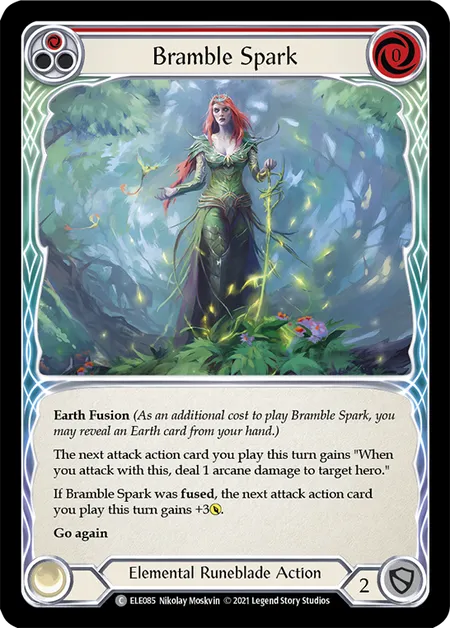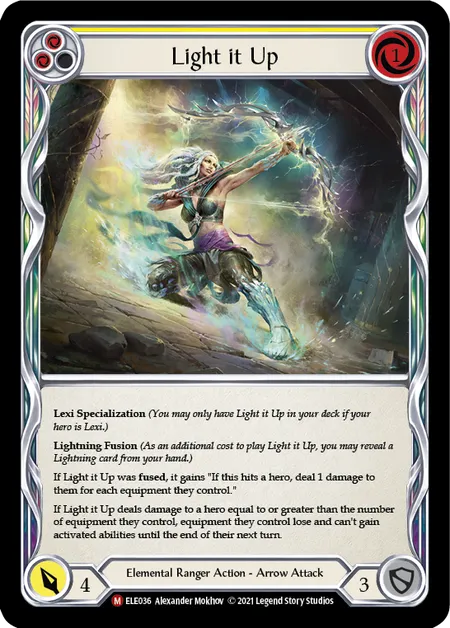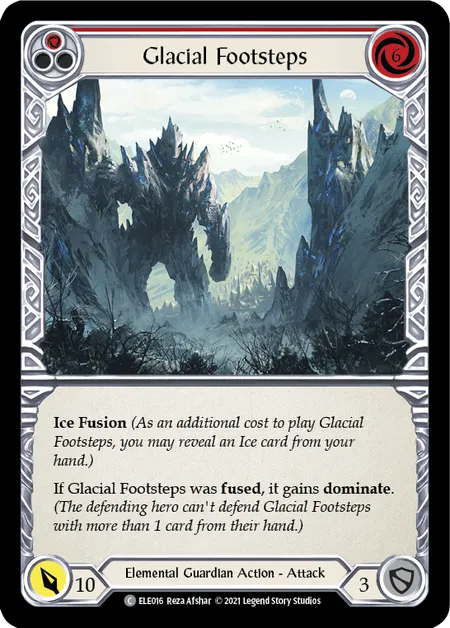The Elemental talent of Tales of Aria introduces with it deep complexity to the draft format. Sharing a fragment of the card pool with another class in the form of the elements - Ice, Earth and Lightning, gives each player a lot more options during the drafting process. Do you pick up key element cards first, strong class cards, or stay open with the generic Elemental cards that can be added to every deck? These questions can shape your mindset before you sit down for a draft and help with the first few picks, but ideas like card evaluation, element cards versus class cards and picking up on signals can help you throughout the draft to assemble a powerful deck.

Elemental Cards versus Class Cards
When sitting down for a draft, the first obvious dilemma you will face is whether you should prioritise Elemental cards, element cards (Ice, Earth and Lightning cards), or the class cards. This choice, in my opinion, is ultimately a choice between power and flexibility. Ice, Earth and Lightning cards keep you relatively open - they work with two different heroes - they help you fuse, but they tend to have slightly weaker stats than the class card counterparts. They tend to defend for 2 and their abilities tend to be not as powerful as their class counterparts. The class cards give you access to fusion. The most powerful cards tend to be the class cards but you cannot fuse without those element cards, so there is that synergy and need for balance between the two.
So what do you pick first? Finding a strong class card and first picking it can be a risk. Locking yourself into a class can be a gamble, because the players next to you could go into the same class and you might be competing for the same cards. On the other hand, the risk could pay off, and by picking these strong class cards can give a clear signal to the player to your left that you are in that particular class. Picking the element cards keeps you open to two heroes meaning you can decide which hero is more open further down the draft. Keep in mind, this only holds true for as long as you are picking a single element. As soon as you have expanded into 2 different elements, it is the same as committing to a specific hero, in which case your card evaluation should adjust to reflect this. Overall the element cards versus class cards is very subjective and ultimately depends on your card evaluation and playstyle. The subjectivity is clear in our Pick 1 Pack 1 videos:
Evaluating Fuse Cards
Even though the above dilemma is subjective, it is important to evaluate cards correctly, especially cards with fusion. Let’s compare two Runeblade cards:
Both of these cards have a high power ceiling. Vela Flash is a very solid attack with a powerful upside. Getting the fuse ability makes this card a very strong addition to a Lightning deck. Bramble Spark on the other hand, is an extremely powerful non-attack action card that is great in an Earth Briar deck, because the +3 fuse ability and the 1 damage ping are just very synergistic with Briar’s hero ability. Therefore, the power ceiling is also really high for Bramble Spark. Looking at the power floor, Vela Flash, without fuse, is still really solid, being a 1 cost 5 damage which defends for 3. This card would still be a strong addition to a Briar deck that does not have many Lightning cards to fuse with, simply because of its base stats. In contrast, Bramble Spark has a very low power floor. The non-attack action card gains a lot of its power through its fusion ability, without it, it becomes significantly weaker and actually does the same thing a blue strip version would do. Understanding this type of card evaluation can help you draft those early picks and stay more open within your chosen class.
Picking Up Signals
What is a signal in draft? A signal in a draft is a piece of information you can gain from what the person next to you has left in the pack. By understanding what cards have been left in the pack, you can gain an idea of what the person next to you has picked themselves and how their draft is shaping. For example, you notice in pack 1 pick 4 that the pack does not contain any Ranger class cards and there is only one weak Lightning card, while the pack is full of powerful Guardian, Runeblade and Ice cards. This is a strong indicator that the person next to you (and potentially person next to them) is drafting Lexi cards and is focusing on the Lightning side. This can help you decide what direction you want to go. If you have been trying to stay open, picking up Ice cards for example, you now have the information to confirm Oldhim seems open and picking more powerful Oldhim class cards is not a bad idea. Chances are, unless the players next to you switch, you will continue to receive a stream of powerful cards in your class and potentially in your elements too.
Another key point about signals is understanding what signals you are sending the person next to you. Giving them a very powerful class card, that is not your class, can help ease them into the class or Element you don’t mind them taking. This can really help when the next pack comes round and they start passing to you. Chances are if they picked up on the signal that their picks don’t affect you that much. If you play Oldhim and lock the person next to you into Lexi for example, by passing them strong Lightning and Ranger cards, chances are on the next pack they will continue to pick those Lexi cards they need, giving you free reign on the powerful Earth and Oldhim cards.
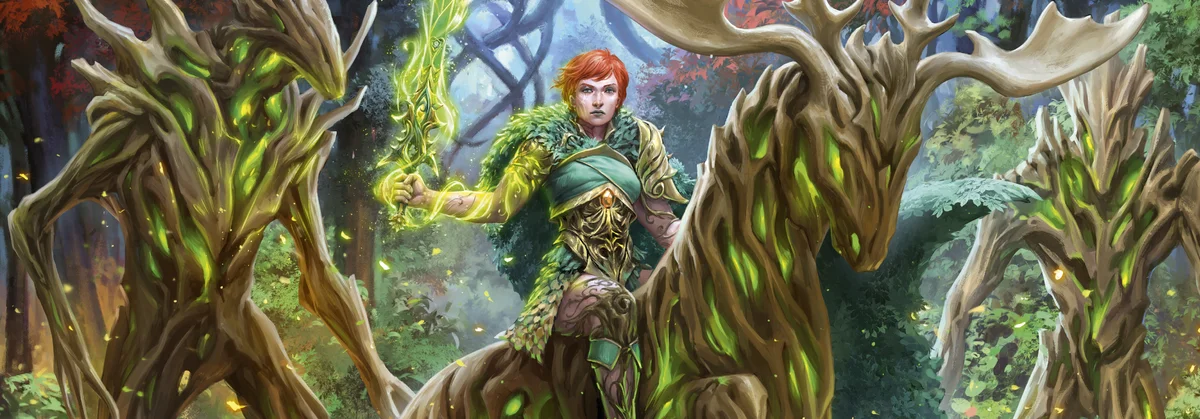
The concepts of evaluating element cards versus class cards, evaluating the floor and ceiling of fusion cards and picking up on signals can help you ease into the Tales of Aria draft format. However, these concepts are only the tip of the iceberg of the complexity of this format. There are so many variables, such as the power cards in the particular packs from the first pick, the playstyle and draft style of other players of the draft, archetypes present in the packs and many more. These nuances keep the Tales of Aria draft format exciting and fresh, but also challenging. The best way to improve your draft is to keep practising, but practising with an objective. For example, you can approach a draft forcing a particular strategy and see how that goes. You can decide to focus on power cards rather than staying open. The more you experiment and the more you repeat the process, the more data you will have to make the correct decisions that will improve your draft and give you a better understanding of the format.
For your first draft or even first few drafts, I highly recommend focusing on drafting a single element deck. For example, a Lightning Lexi deck, or Earth Oldhim. As you get more experience, it’s fun to explore the wider synergies of hybrid element archetypes also. From the many drafts we did during development, we found that both single element and hybrid element decks would win draft pods. The most important thing was understanding what each of the different archetypes is trying to do and what cards are most important to each archetype, reading the signals during the draft, and of course playing well.
Upcoming Events
Don't miss the opportunity to play in our premiere events coming up later this year!
